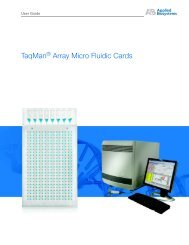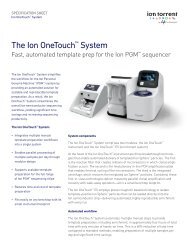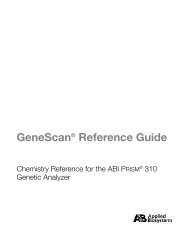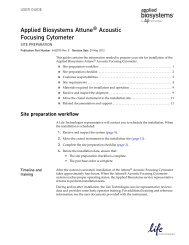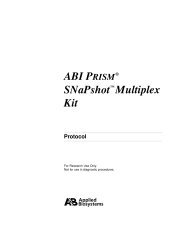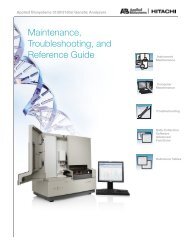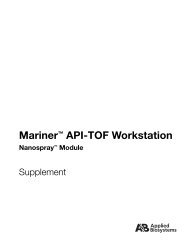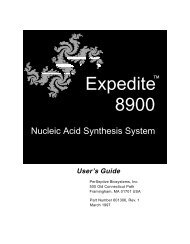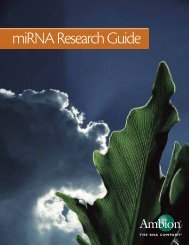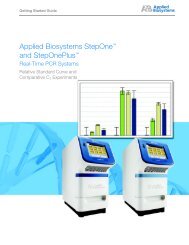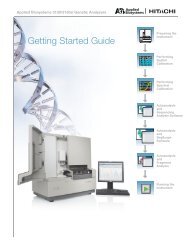Applied Biosystems SOLiD™ 4 System SETS Software User Guide ...
Applied Biosystems SOLiD™ 4 System SETS Software User Guide ...
Applied Biosystems SOLiD™ 4 System SETS Software User Guide ...
You also want an ePaper? Increase the reach of your titles
YUMPU automatically turns print PDFs into web optimized ePapers that Google loves.
B<br />
Appendix B Advanced Topic: Data Analysis Overview<br />
Color-space and base space as applied in the SOLiD 4 <strong>System</strong><br />
Color-space formats<br />
Figure 4 Relationship between color-space, base position, and<br />
sequencing chemistry<br />
Color-space data are presented in three slightly different formats. In<br />
two of the formats, a base (A, C, G, or T) is appended to the colorspace<br />
calls.<br />
Note: Color-space data are self-complementary: In some situations,<br />
when you might expect to see complemented data (for example,<br />
reverse), the data appear the same. For example, AC = 1, TG = 1.<br />
The different types of color-space data are:<br />
Processed color-space data: Consists of a numeric string<br />
prefixed (suffixed if reversed) by a single base. The base that<br />
precedes the numeric (color code) data is the first base of the<br />
actual sequence (in base space, not color-space).<br />
Unprocessed color-space data: Consists of a numeric string<br />
prefixed by a single base. This base is the final base of the<br />
sequencing adapter and is not part of the target sequence. It is<br />
included to disambiguate the first color call.<br />
146 <strong>Applied</strong> <strong>Biosystems</strong> SOLiD 4 <strong>System</strong> <strong>SETS</strong> <strong>Software</strong> <strong>User</strong> <strong>Guide</strong>



